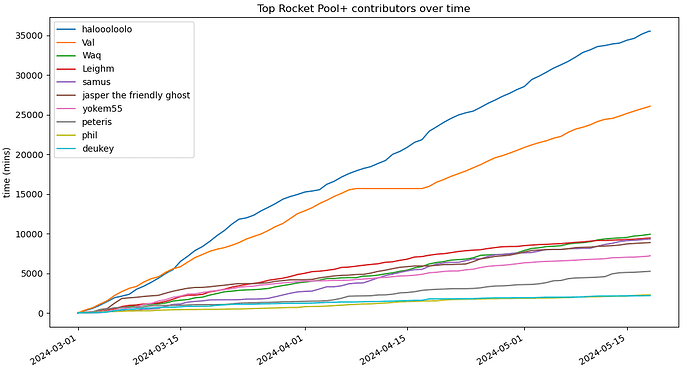Hi All,
We will be selecting nine IMC members (the full committee) for a 5/9 multisig out of a pool of 12 nominees.
In order to help inform your choices, please refer to:
- IMC nominee statements in IMC Nomination Thread
- Supplementary hard metrics below
- You may also ask questions of nominees - I suggest doing that in this thread so others can benefit from the discussion
Per RPIP-10, we’re now ready to have the vote go up, and I will request it in the next few days.
- For full voting process, see the “Management Committee Selection” section of RPIP-10 .
- Important note: vacancies that occur get filled by going down the list from previous selections. The main impact here is that it may still be worth giving vote power to folks you consider capable, even if they don’t make it to the top nine.
Supplementary hard metrics
Note: These numbers are extremely rough. Eg, a post on discord might represent a kek, or an insightful multiparagraph response. Different people interact differently with platforms. These numbers should be just one tool for you.
Discord stats
Got total server activity for nominees using rocketscape:
rocketscrape --server rocketpool --include-threads -s 2020-01-01 contributor-history --users 806275470140244019 995528889860370442 109422960682496000 343180040747614209 474028048551772160 354099029434695681 707707212184944702 764676584832761878 405912259706093578 822367662364819456 360474629988548608 916166567228768277
Recent (since March 1st):
Forum stats
Absolute stats:
| Nominee | Forum join date | Forum age (months) | Forum read | Forum topics created | Forum posts created | Forum |
|---|---|---|---|---|---|---|
| peteris | 4/8/2022 | 25.32 | 4200 | 5 | 74 | 202 |
| samus | 9/18/2023 | 7.96 | 722 | 1 | 19 | 39 |
| Valdorff | 5/30/2022 | 23.61 | 4600 | 65 | 661 | 899 |
| Jasperthefriendlyghost | 2/24/2022 | 26.73 | 2200 | 6 | 83 | 187 |
| NonFungibleYokem | 4/13/2022 | 25.15 | 1500 | 2 | 30 | 40 |
| drworm | 3/18/2023 | 14.01 | 525 | 0 | 4 | 10 |
| phil | 3/21/2022 | 25.91 | 275 | 1 | 9 | 17 |
| waq | 6/18/2022 | 22.98 | 2100 | 0 | 58 | 75 |
| astoneta | 3/13/2022 | 26.17 | 573 | 2 | 17 | 26 |
| deukey | 3/25/2022 | 25.78 | 888 | 0 | 9 | 15 |
| haloooloolo | 11/20/2023 | 5.88 | 777 | 0 | 10 | 12 |
| leighm | 11/29/2022 | 17.59 | 329 | 0 | 6 | 3 |
Per-month stats:
| Nominee | Forum Read/month | Forum topics/month | Forum posts/month | Forum |
|---|---|---|---|---|
| peteris | 165.9 | 0.2 | 2.9 | 8.0 |
| samus | 90.7 | 0.1 | 2.4 | 4.9 |
| Valdorff | 194.9 | 2.8 | 28.0 | 38.1 |
| Jasperthefriendlyghost | 82.3 | 0.2 | 3.1 | 7.0 |
| NonFungibleYokem | 59.6 | 0.1 | 1.2 | 1.6 |
| drworm | 37.5 | 0.0 | 0.3 | 0.7 |
| phil | 10.6 | 0.0 | 0.3 | 0.7 |
| waq | 91.4 | 0.0 | 2.5 | 3.3 |
| astoneta | 21.9 | 0.1 | 0.6 | 1.0 |
| deukey | 34.5 | 0.0 | 0.3 | 0.6 |
| haloooloolo | 132.0 | 0.0 | 1.7 | 2.0 |
| leighm | 18.7 | 0.0 | 0.3 | 0.2 |
